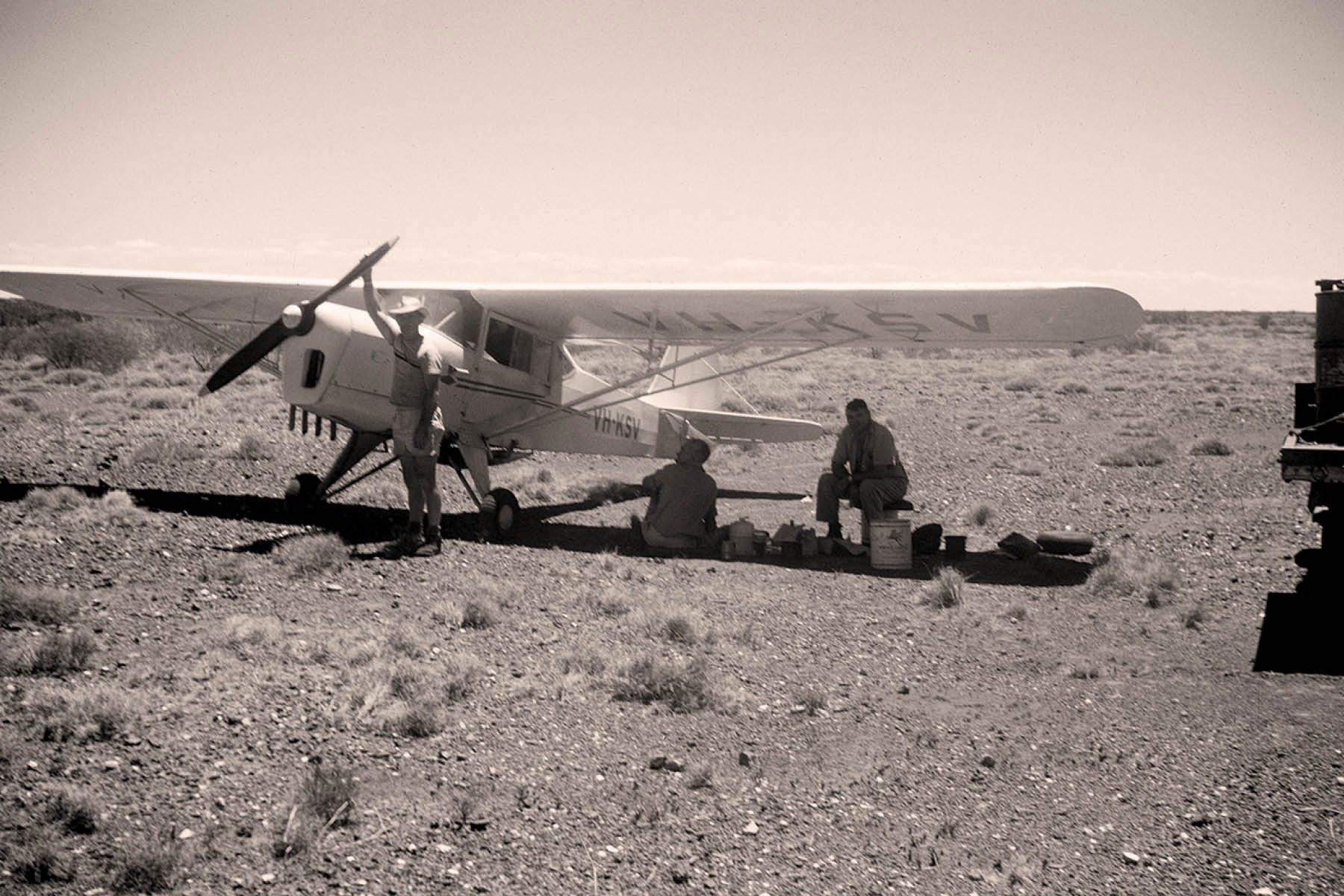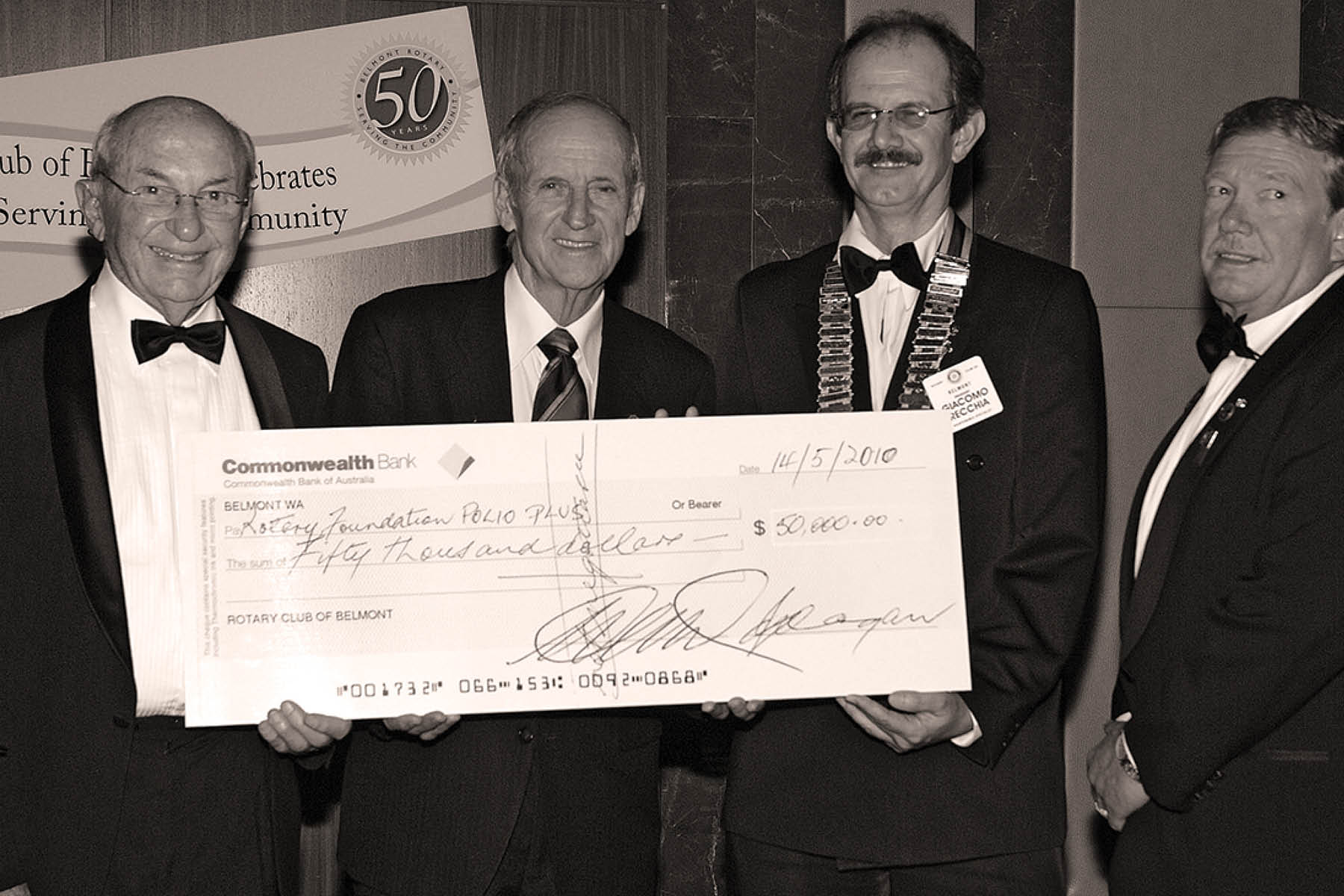
EARLY BUSINESS VENTURES
The foundation of Perron Group’s success extends back to Western Australia’s remote Goldfields in the era of the Great Depression.
It was here that a young boy living in hardship became determined that he would do better for himself and his family.
Like he was to do on so many occasions throughout his life, Lloyd Stanley Perron used his own hands to generate an income, supplementing his family’s meagre earnings by making handkerchief boxes and letter racks to sell to the local miners.
Despite limited access to formal education, young Stan achieved academic success but turned his back on an offer to attend one of Perth’s most prestigious schools to join the workforce.
“We lived in a little hessian house, which was whitewashed and had no water, no light, a bare floor…it was a pretty rugged life”
Stan Perron
Possessing a sharp mind for numbers, Stan supplemented the earnings from his early employment with part-time work at the local horse racing track, before a move to Darwin and the purchase of a truck allowed him to make an initial foray into contracting.
After the bombing of Darwin by the Japanese in 1942, Stan returned to Western Australia and, with his brother Keith, embarked upon several early commercial ventures, including a taxi business and milk bars.

EARTHMOVING
The Perron brothers’ first major commercial venture after the war, the opening of an ice-skating rink and cold storage complex, ended in substantial losses after the intervention of a State Government Minister made the enterprise unviable. However, a keen eye for opportunity and a thirst for success inspired the commencement of Perron Brothers Earthmoving.
Using a second-hand bulldozer and converted US Army tanks to clear land for farming, the company flourished from its humble beginnings and, by the 1960s, had won major contracts for some of the most prominent civil works projects in Western Australia.
Major projects included Serpentine Dam, civil works on BP’s Kwinana Refinery, numerous suburban land subdivisions, as well as clearing land and sinking dams in Western Australia’s vast agricultural regions.
As one of Mr Perron’s contemporaries observed, in this period, there appeared to be very few major infrastructure projects in Western Australia that did not involve a Perron Brothers truck or bulldozer.


MINING
Stan Perron’s earthmoving business provided equipment for his entry into the mining sector, enabling ventures in both the North and South regions of Western Australia. A pioneer of ilmenite mining in Western Australia’s south, the Perron thirst for commerce also extended to tantalite mining in the Pilbara and eventually to a deal with another mining pioneer of the time, Lang Hancock, to fund the pegging of leases for iron ore in the Hamersley Ranges.
The deal Mr Perron struck with Lang Hancock and his business partner Peter Wright is arguably one of the most lucrative investments made in the early days of Western Australia’s mining boom. A relatively modest investment in return for a 15 per cent stake in future discoveries of iron ore has since reaped returns in the hundreds of millions of dollars.
“And that 500-pound investment is now worth about $30 million a year [in mining royalties].”
Stan Perron

TOYOTA WA
In the early 1960s, Stan Perron accepted a substantial purchase offer for his burgeoning earthmoving business from national contracting firm Thiess.
This deal was contingent upon Mr Perron identifying an individual or company prepared to establish a agency in Western Australia for an unknown brand of Japanese commercial vehicles — Toyota. Thiess had been granted Australian rights by Toyota after importing large numbers of its Toyota LandCruiser four-wheel drives for work on the Snowy Mountains Scheme in New South Wales. Unable to identify anyone willing to take on the rights, Mr Perron eventually partnered with an existing Perth car dealer, Dave Golding, who had just been granted agency rights to sell Toyota passenger vehicles in Western Australia.
Shortly after forming the partnership in 1963, Mr Golding sold his half share in the business, and Mr Perron carried on selling Toyota’s commercial and passenger models as well as their parts and accessories. From selling 263 vehicles in its first six months of operation, Toyota WA now distributes one-in-four new vehicles sold in Western Australia, with annual sales numbering into the tens of thousands.
Remarkably, the arrangement with Toyota operated for many decades with no written contract, instead relying on a “handshake agreement”. The need to provide legal certainty in the event of Mr Perron’s death led to the signing of a formal agreement in early 2001. The two Perron Group-controlled companies that trade as Toyota WA now hold joint distribution rights under a revised agreement signed in 2011.
As Joint Distributor, Toyota WA is responsible for receipt of stock, pre-delivery, appointment and supervision of dealerships, training, accessory fitment, IT infrastructure, marketing and warranty administration for new Toyota vehicles and parts.
Toyota is the only automotive brand in Western Australia to provide the full range of services and support to its dealer network and customers. All activities of the Toyota business are located at the Miles Road complex in Kewdale.
“John, they’ve offered me the Toyota agency for Western Australia. What do you think?” He replied, “Stan, you’d be mad to take that on. Aussies will never buy Japanese cars. You’re wasting your time.”
John Court, friend, recalling a conversation with Stan Perron in the 1960s.


PROPERTY
What is today one of Australia’s largest privately held property portfolios, began with the purchase of land holdings along Perth’s Great Eastern Highway.
“I bought every block of land on Great Eastern Highway between the Causeway and the airport – every piece of land I could buy. I had them for years and I made a lot of money out of that.”
Stan Perron
The Perron passion for property extended into the purchase of some of Perth’s landmark hotels before diversifying into retail property — the sector that was to contribute in large part to Stan Perron’s induction into the Australian Property Hall of Fame.
The initial move into the purchase of several shopping centres in Perth extended over time, and on his passing in 2018, the Group owned more than a dozen centres across Australia either in full or in 50% joint venture ownership with other companies.
Historically, Perron Group has also been a major investor in commercial property, including office towers in Perth and Sydney.

INDIRECT INVESTMENTS
Perron Group’s other income streams come from a significant portfolio of listed equities, its infrastructure holdings (including significant stakes in three airports), the substantial flow of mining royalties from Rio Tinto and, more recently, its investment in private equity via leading global funds.

PHILANTHROPY
Mr Perron's commitment to philanthropy began with his involvement in the Rotary movement, where he was frequently known to bolster the fundraising efforts of his local club with substantial personal donations.
A childhood of hardship inspired his enduring belief that those who do well in life should help those in need.
This culminated in 1978 with the establishment of the Stan Perron Charitable Foundation, which has since donated many millions of dollars to worthy causes — especially those focused on the health and well-being of Western Australian children.
The extent of the Foundation's giving increased substantially after Mr Perron's passing based on a Memorandum of Wishes to the Group's directors outlining his desire that Perron Group should henceforth operate as a permanent endowment to fund the activities of the Foundation and support his family. Under the terms of this arrangement, the Foundation can request a substantial portion of the Group’s annual earnings for its philanthropic activity, which currently consists of two primary streams:
The provision of grants to charitable causes that benefit the Western Australian community.
The funding of medical research primarily focused on the health and well-being of children.
The Stan Perron Charitable Foundation is chaired by Elizabeth Perron AM.

A LIFETIME LEGACY
Stan Perron AC passed away on the 23rd of November 2018 aged 96. Three months after his death, Mr Perron was posthumously appointed as a Companion of the Order of Australia (AC) in recognition of his significant contributions to charity and the property sector.







